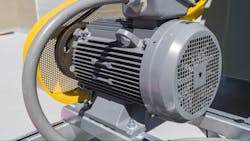What Can Possibly Go Wrong, Part 1
A repair is presumably a project that restores equipment to its correct condition. That is sometimes not the case, especially when a repair is an on-demand project that interrupts the needs of production rather than a project that is scheduled around the needs of production.
An example of an on-demand repair is a motor fails so production is interrupted until it is replaced. An example of a planned repair is during a shift change maintenance will address an excess vibration alarm. In either situation, the quality or appropriateness of the work can be wrong.
Consider this scenario. The motor won’t start, even though the disconnect is closed.
- Jim measured supply voltage on L1 at the motor, so he recommended replacing the motor. But if Jim had checked at a location that didn’t require him to remove tape from the leads (e.g., the controller) he would have found the L1 and L2 thermal overloads were open.
- Jim measured the correct voltage at the branch circuit breaker, so he concluded the motor must be bad. But if Jim had checked at the motor controller, he would have found it was not allowing the motor to start or to run because an E-stop was open.
What might you say?
About the Author

Mark Lamendola
Mark is an expert in maintenance management, having racked up an impressive track record during his time working in the field. He also has extensive knowledge of, and practical expertise with, the National Electrical Code (NEC). Through his consulting business, he provides articles and training materials on electrical topics, specializing in making difficult subjects easy to understand and focusing on the practical aspects of electrical work.
Prior to starting his own business, Mark served as the Technical Editor on EC&M for six years, worked three years in nuclear maintenance, six years as a contract project engineer/project manager, three years as a systems engineer, and three years in plant maintenance management.
Mark earned an AAS degree from Rock Valley College, a BSEET from Columbia Pacific University, and an MBA from Lake Erie College. He’s also completed several related certifications over the years and even was formerly licensed as a Master Electrician. He is a Senior Member of the IEEE and past Chairman of the Kansas City Chapters of both the IEEE and the IEEE Computer Society. Mark also served as the program director for, a board member of, and webmaster of, the Midwest Chapter of the 7x24 Exchange. He has also held memberships with the following organizations: NETA, NFPA, International Association of Webmasters, and Institute of Certified Professional Managers.
